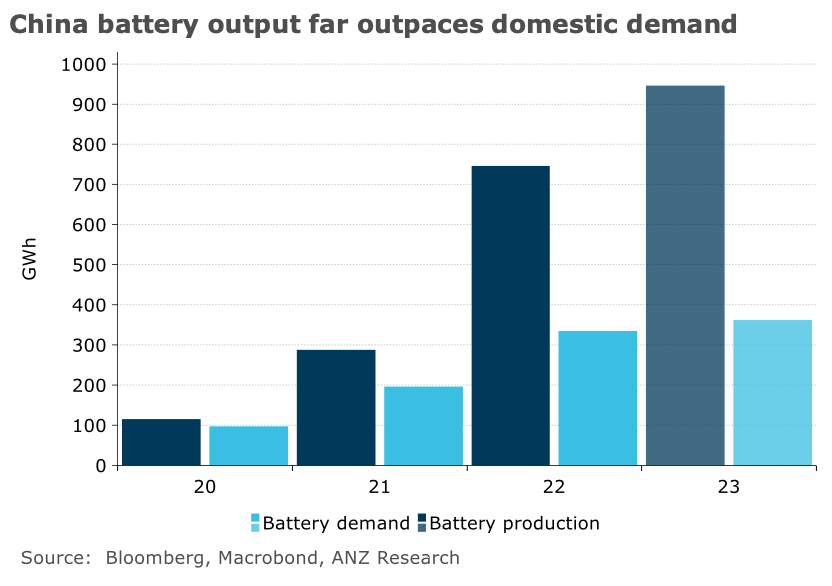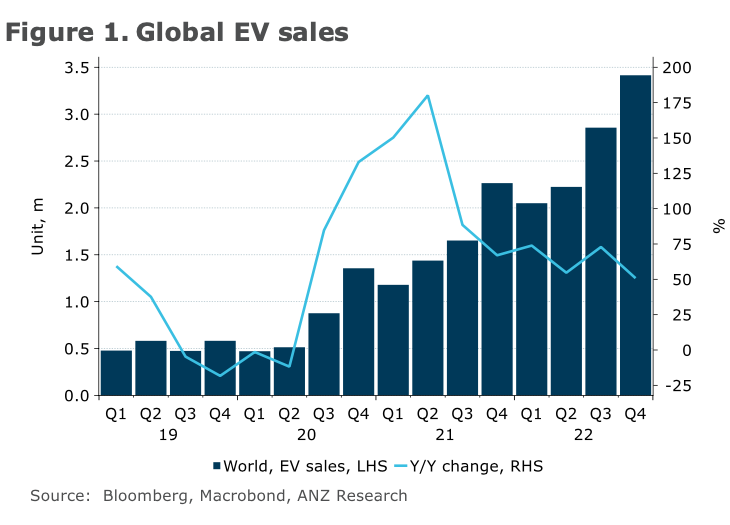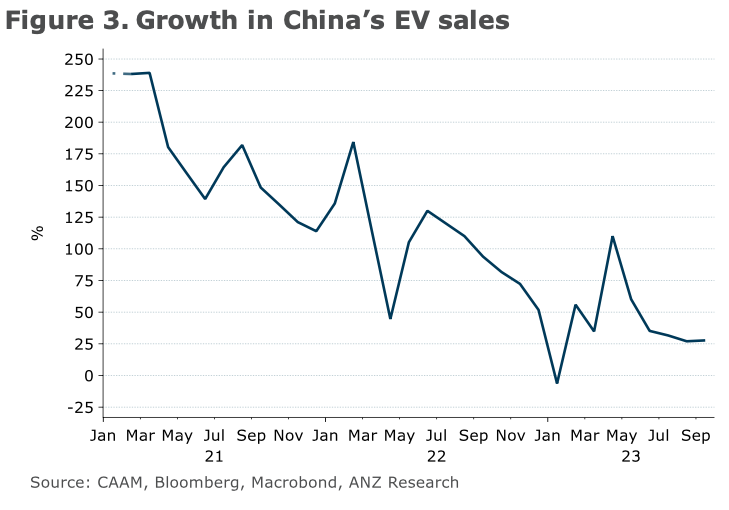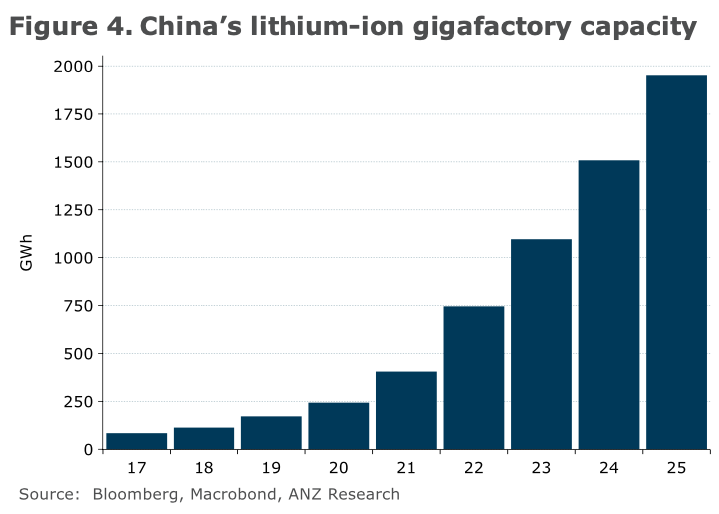-
How many of us paid attention over the summer break when as a company little known a decade ago – Shenzhen based BYD - overtook Tesla as the world’s biggest-selling electric vehicle (EV) maker?
For many people it was the first time they had heard of the Chinese company.
"BYD, the largest EV maker, has almost 15 per cent of the battery market, powering not only its own fast-growing brands but also rival carmakers in China."
Understanding the ten-year rise of BYD, and the entire Chinese electric vehicle sector, is crucial if you want to understand everything from the price of what goes into an EV to how much you will pay for one at a dealership.
The China story
China’s huge influence in the EV sector stems from moves made years ago to become a powerhouse in the most crucial component of the vehicle – its battery. A period of huge investment has seen China strengthen its position as the world’s biggest EV battery maker.
Supported by government policies, production capacity at China’s battery factories was expected to reach 1,500GWh at the end of last year. This is against global battery demand from the EV sector of approximately 1,150GWh.
China’s dominance of the sector is highlighted by the market share some of its home-grown battery makers have developed.
{CF_IMAGE}
CATL has carved out a 37 per cent share of the global EV battery market, supplying brands from Tesla and BMW to Volkswagen and Ford.
BYD, the largest EV maker, has almost 15 per cent of the battery market, powering not only its own fast-growing brands but also rival carmakers in China.
Exporting is widely regarded as one of the solutions to overcapacity in China’s EV sector. However, rising opposition from Europe and the US has created an oversupply in China.
EV sales boom
There’s no doubt EV sales are booming. Around 3.7 million EVs were sold in the September quarter, up 32 per cent year on year.
{CF_IMAGE}
{CF_IMAGE}
The EV market climbed to 18.6 per cent of new passenger car sales in the same quarter. It looks likely about 14 million EVs were sold in 2023, bringing the market share to 20 per cent.
This compares with the global passenger car market which is expected to grow by only 4 per cent year on year in 2023.
The passenger EV market in China grew 92 per cent in 2022 to reach 6.1 million units. In the last quarter alone, China’s consumers purchased nearly two million electric cars, rushing to beat the phase-out of national subsidies. Growth has slowed in 2023, but total volumes are expected to reach 8.1 million units.
China has already reached its target of EV sales making up 20 per cent of all car sales by 2025. In fact, EV sales accounted for 33 per cent in the September quarter alone.
In Europe, 800,000 EVs were sold between July and September, up 31 per cent year on year compared to 18 per cent year on year growth in the overall passenger car market. Its forecast to hit 3.3 million sales this year.
In the US, 432,000 EVs were sold in the September quarter, up 54 per cent year on year, with almost all EV automakers seeing strong growth.
{CF_IMAGE}
{CF_IMAGE}
Is the honeymoon over?
Cracks have subsequently appeared in the market as tighter monetary policy and high inflation impact consumer demand.
Growth in China, the world’s biggest EV market, has been steadily falling – from more than 100 per cent in 2022 to around 25 per cent in recent months.
This comes on the back of a shift in government policy measures. Beijing removed direct subsidies last year and replaced them with tax incentives. An aggressive price war among EV companies has also led to consumers holding off for better deals. The weak economic backdrop has also played its part.
The honeymoon period for the EV market appears to be over, with many companies along the supply chain re-focusing on margins, profitability and efficiency gains.
Most of the weakness has emerged in the North American market. High inflation and a weaker economy has weighed on consumer demand. This has led US EV makers to adjust production schedules.
This has been compounded by concerns over whether the US’s 2022 Inflation Reduction Act (IRA) will remove the influence of Chinese automakers in the US market, resulting in strikes by US auto union.
This is impacting major projects such as Ford Motors’ partnership with Chinese battery manufacturer CATL, with Ford forced to delay construction of its battery plant in Michigan citing profitability concerns.
At the same time, high interest rates are derailing the ambitions of automakers in Europe to accelerate the shift to EVs.
EV sales are still growing strongly, but demand is not keeping up with carmakers’ expectations. So they are altering their plans.
Bottlenecks and new plans
The growth in sales has created supply chain bottlenecks in many materials used in EVs. A period of readjustment could have important implications for the battery metals sector.
After record growth last year, expectations were high for the EV market 2023 and China experienced a huge build-out in battery capacity.
However, in a rush to make the most of the EV boom, supply ultimately outweighed demand by two to one. While still strong, EV sales growth has subsequently been in decline, leading battery makers to cut output and reduce their battery metal inventories.
Metals such as lithium, cobalt and nickel – crucial for EV batteries – will remain oversupplied in the short term, keeping prices depressed.
Nevertheless, there is still a strong long-term outlook. Supply still needs to increase by 1.5 to 3.5 times over the next five years, a goal not easily achieved.
A period of sustained weakness in battery metal prices could ultimately make the decarbonisation of the transport sector even harder.
With little appetite (or expertise) to dig the materials from the ground and process them, EV makers will face supply questions until the market stabilises.
It’s unlikely to impact the supply of EVs in the short term. However, it remains an open question over the longer term.
Realities
The excitement around decarbonisation of the transport sector is quickly giving way to the realities of the task at hand.
The uneven growth of the supply chain, combined with consumers becoming more cost conscious, has seen demand for battery metals suffer. While the longer-term outlook is positive, the market must navigate these short-term headwinds.
The risk is any of these hurdles may put the industry back years, and ultimately delay the journey to a completely carbon-free transport sector.
Daniel Hynes is senior commodity strategist with ANZ
The views and opinions expressed in this communication are those of the author and may not necessarily state or reflect those of ANZ.
-
-
-
-
-
anzcomau:Bluenotes/technology-innovation,anzcomau:Bluenotes/Innovation,anzcomau:Bluenotes/Commodities
China’s road to EV dominance
2024-01-25
/content/dam/anzcomau/bluenotes/images/articles/2024/michael-fortsch-4o-2K69J05g-unsplash.jpg
EDITOR'S PICKS
-
Ups and downs in raw material prices. National battles to become battery makers. The quest to move up the EV value chain is no flat track.
23 March 2023 -
A tight nickel market and high prices have induced a supply response from miners. That could lead prices lower if the electric vehicle market fails to deliver on lofty goals.
7 February 2023





